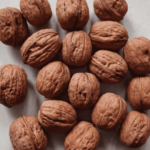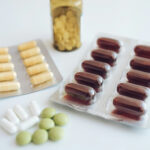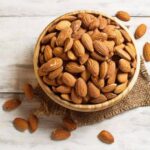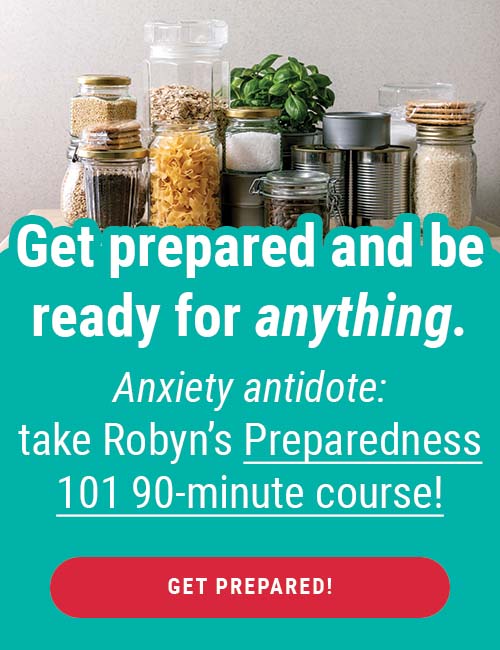What Are Anti-Nutrients, And Should You Worry About Them In Your Food?
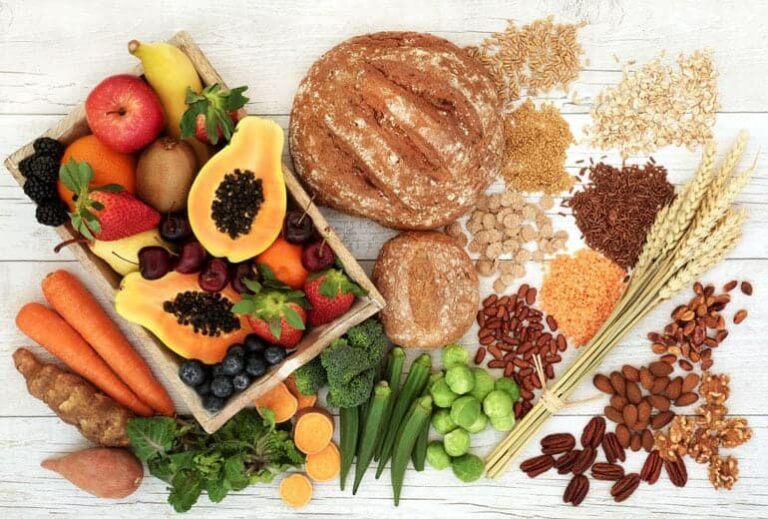
One of the most confusing controversies in the world of health and nutrition is the debate about ANTI-NUTRIENTS. Recent scare tactics about these “anti-nutrients” originate primarily from reductionistic thinking, circulated on the internet by a few “experts” theorizing. The sad consequence is that many consumers fear the most nutritious whole foods in the world.
Anti-Nutrients in Foods
In this article:
- What are Anti-Nutrients?
- Phytates in Grains
- Lectins in Grains and Legumes
- Purines in Plant Foods
- Cyanide in Apples
- Oxalates in Green Leafy Vegetables
- Goitrogens in Cruciferous Vegetables
- Conclusion and Final Remarks
What are Anti-Nutrients?
While reports that all grains, legumes, and many fruits and vegetables contain anti-nutrients are true, the demonizing of these whole foods as dangerous is evidence that you aren’t being told the whole story. Anti-nutrients are natural or synthetic compounds found in different foods that interfere with the absorption of minerals, vitamins, and other nutrients.
Jim Simmons | Original Fast Foods
No one addresses this issue more logically than my friend Jim Simmons, whose book Original Fast Foods I highly recommend. During an email exchange I had with Jim, he wrote:
“Research now supports the idea that anti-nutrients are nature’s way of helping us to be more intuitive in our eating patterns. For instance, some spinach is really good for you, but as you consume too much, the level of oxalates will build up in your bloodstream to a point that a signal will be sent to your brain and then a signal is sent from the brain to your endocrine system.
The long and the short is, you will lose your appetite for spinach until the level of oxalates drops enough that your taste for spinach is turned back on…. don’t get too complicated in your eating habits.”
Anti-Nutrients in Whole Foods
Anti-nutrients are in most, if not all, whole foods. This does not mean they are bad, scary, or to be avoided.
In fact, avoiding the very foods that contain anti-nutrients will put your disease risk through the roof. They happen to also be the foods highest in fiber, micronutrients, and all disease-preventative compounds. Synergistically, the hundreds of phytonutrients, vitamins, minerals and enzymes in the same foods that contain goitrogens or oxalates, keep you slim, healthy, and clear-thinking till you’re old.
Anti-nutrients, as they are popularly referred to, possibly poorly named, serve an important purpose in the overall chemistry of the plant and in its delivery of phytonutrients to your body.
Phytates in Grains

Science actually knows very little about these anti-nutrients that some say rob your body of minerals, causing unnecessary fear among consumers in the past decade.
Phytic acid is found naturally (in varying degrees) in most grains, seeds, legumes, and nuts, but our bodies don’t produce the enzyme to metabolize and absorb it.
What are Phytates?
Phytate is a naturally occurring compound found in plant-based foods such as grains, beans, nuts, and seeds. It is recognized by the presence of phytic acid. Phytates can react with certain minerals (like iron, calcium, magnesium, and zinc), and some carbs and proteins, binding to them and making them less available for our bodies to use. (1) This is why the Paleo diet community, in particular, has demonized them as harmful.
Phytic Acid Myth
However, research doesn’t support avoiding phytates. In fact, the evidence is clear that they are, in fact, helpful and important, particularly as a defense against kidney stones (by absorbing excess calcium), lowering cholesterol, (2) as an antioxidant, (3) and even protecting against cancer. (4)
In many cases, it is the very quality of binding to excess minerals that makes phytic acid beneficial.
How to Neutralize Phytic Acid
If you’re still worried about phytates, it’s easy to neutralize them in your legumes, seeds, and grains–soaking or sprouting them for a few hours or overnight activates the enzymes that break down phytates.
Lectins in Grains and Legumes
The “Eat Right for Your Blood Type” and Paleo movements are responsible for the panic over lectins, which are proteins in raw grains and legumes that help cells stick together. Lectins have been blamed for causing a host of health issues, particularly leaky gut, and autoimmune disease.
However, as with phytates, lectins are neutralized with soaking, sprouting, and cooking. It’s almost unheard of to eat legumes like kidney or pinto beans in their raw state, which is when lectins are active.
The Downside of Avoiding Legumes and Grains
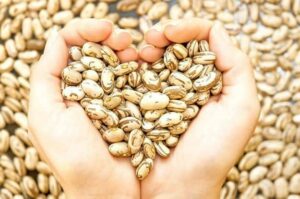
The risks of eliminating grains and legumes from the diet for fear of easily-managed “anti-nutrients” are far worse than the anti-nutrients themselves for the vast majority of us.
Dr. Michael Greger | How Not To Die
In his book How Not To Die, Dr. Michael Greger documents thousands of studies proving that the healthiest people on the planet consume grains, legumes, and other plant foods.
Speaking of grains and legumes in particular (the food groups most associated with lectins), he cited the recommendation of nine independent research teams analyzing half a million studies – to eat whole grains and/or legumes with every meal for cancer prevention. (5) Every meal.
Dr. Joel Fuhrman | Eat to Live
In a recent podcast interview I did with Joel Fuhrman, MD, author of Eat to Live and three other New York Times bestsellers, he explained that residuals of legumes attach to the villi in our stomach, and are our top defense against gut disease. And that the anti-lectin fear-mongering is nothing more nor less than a fad.
Eat your quinoa and pinto beans, folks!
Purines in Plant Foods
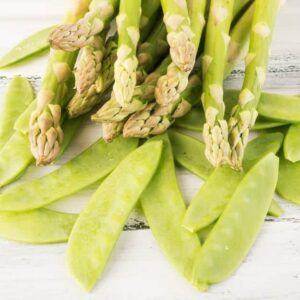
These compounds are associated with protein and are ubiquitous in our cells and most foods. Moderately high purine-content plant foods include beans, lentils, asparagus, peas, oatmeal, and cauliflower.
Purines are necessary and good, but in concentrated amounts can cause problems for people with gout and a few other very specific illnesses.
Several researchers, including Choi, published in the New England Journal of Medicine, have found that plant proteins do NOT increase gout risk, while the high-protein organs and flesh of animals, do increase gout symptoms. (6)
Purine Absorption and Malnutrition
It’s a non-issue unless you have a nutrition-related health problem that affects your purine metabolism.
Especially for children and infants, problems that may warrant looking at reducing foods containing purines may include autism, cerebral palsy, deafness, epilepsy, recurrent infections, or anemia.
Recommended Purine Limits
In those cases, a doctor may limit purines to 150 mg or less. (Keep in mind that MOST cases of those illnesses have nothing to do with purines.)
Cyanide in Apples

Cyanogenic Glycosides in Apple Seeds
True, cyanide is in apple seeds.
Cyanide is actually a trace element our body needs. What’s in apple seeds is a tiny amount, and your body breaks it down into another harmless compound during metabolism.
I put apples, core and all, in my green smoothies. My 74-year old dad has eaten apples whole, with the core, his whole life. (He likes to point that out to whoever is within hearing range, “Hey look, I ate everything but the stem.”)
Different Types of Cyanide
The cyanide used by Socrates’ murderer, the poison favored by German Nazis, is a synthetic chemical combined with another element — hydrogen cyanide or sodium cyanide or potassium cyanide.
In fact, the “amygdalin” made of natural cyanide and sugar, found in apple seeds, is the B17 found in other pits (like apricot) that had people lining up by the thousands in Mexican cancer clinics in the 1980’s.
My grandmother credited it, and a raw vegan “juicing” diet, with her cancer cure in that decade.
Oxalates in Green Leafy Vegetables
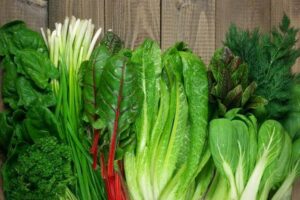
I have done this subject to death. Like the other anti-nutrient debates, it’s another tempest in a teapot.
At issue is the claim that oxalates (found in foods like spinach, other leafy greens, vegetables, and nuts) can over accumulate, causing kidney stones and other health problems.
I do not disagree that there are a few people who are not metabolizing oxalates well (a condition called hyperoxaluria), but I’m very reticent to embrace the idea that we eliminate an entire class of foods because of it.
Nutrients and Oxalate Content
Greens have many critical properties that other foods do not, and these nutritional benefits are desperately needed by virtually everyone. Oxalates are one compound, of many, in a serving of spinach, and researchers looking at the anti-nutrients issue mostly agree that the benefits massively outweigh the tiny risks for a very few people, of eating leafy greens in abundance.
Don’t Avoid Greens
If you do find that oxalates are a problem, you can google “low oxalate greens” and use those, instead, in your green smoothies and salads. Avoiding greens is tantamount, however, to avoiding health.
Avoid Cooking Greens
A companion “old wives’ tale” in this controversy is the disproven idea that cooking your greens neutralizes oxalates. It doesn’t, and cooking your greens also kills enzymes, and damages many vitamins.
Goitrogens in Cruciferous Vegetables
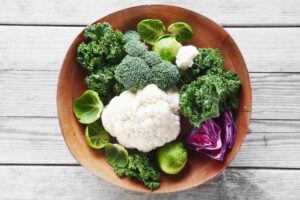
Let’s use some common sense. Let’s say a food has sustained human life for thousands of years, and dozens or even hundreds of studies show it to be dramatically cancer preventative.
(I’m referring to broccoli, cabbage, and kale — the crucifers.)
Let’s say we break down the many complex parts of the broccoli plant, over 100 beneficial compounds, and we find one that, when chemically isolated and in large amounts, could interfere with thyroid function – goitrogens.
Cruciferous Vegetable Myth
Don’t succumb to the myth that you should avoid cruciferous vegetables if you want to avoid goiters or other thyroid conditions, even if you are hyperthyroid. It is thoroughly lacking in evidence, and a classic example of “throwing the baby out with the bathwater.”
Cancer Preventative
In fact, the studies on crucifers’ role in preventing thyroid and other cancers demonstrate precisely the opposite – they are protective foods that you want to go out of your way to eat more of! (7)
This year, I attended a conference of wellness professionals and talked with my friend, oncologist Stephen Eisenmann. I said, “Tell me the top 3 cancer preventative things anyone can do.” One of his top 3 was to eat more crucifers.
Conclusion and Final Remarks
If you’ve read this article and are now going to avoid whole grains, cruciferous vegetables, or apple seeds, you’ve missed the point entirely.
Processed Foods are Worse
Whatever OTHER food you eat instead of that whole plant food — animal flesh, or packaged foods — has far worse than an anti-nutrient or two.
They have heat-damaged carcinogenic oils, no fiber, refined sugar, chemicals from solvents and preservatives and flavor enhancers and packaging and colorings. (In fact, many packaged, processed, and animal foods also contain anti-nutrients. Almost everything does!)
Eat More Whole Foods
You’re simply far better off eating whole foods. They’re the anti-anti-nutrient!
Learn WHY and HOW to eat more whole foods in my FREE VIDEO MASTERCLASS going on right now. It’s your shortcut to my best tips, getting to the bottom of the controversies, and learning to eat more of the world’s healthiest foods.

We’d prefer that you do it inexpensively, deliciously, and easily–and you’d probably enjoy that too. That’s what the video class is all about!
What other anti-nutrient foods do you want to talk about? Mention them in the comments section below!
UP NEXT: Grains and Legumes Made Easy

Disclosure: This post may contain affiliate links that help support the GSG mission without costing you extra. I recommend only companies and products that I use myself.
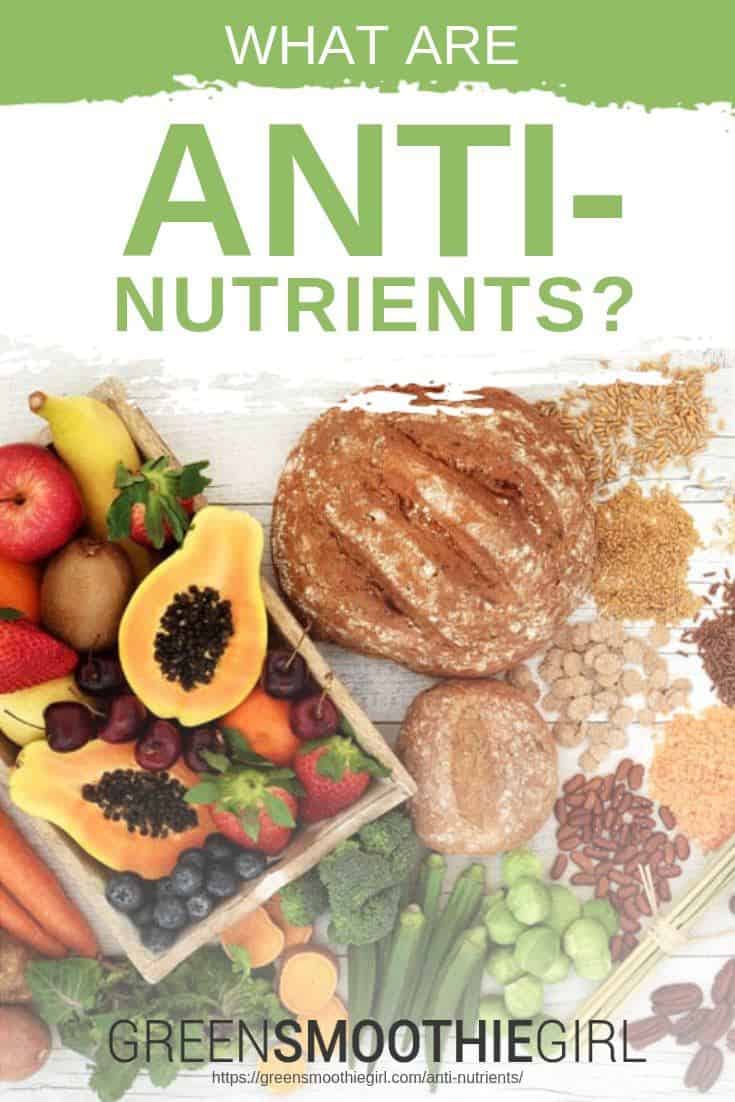
Resources
- Yoon JH, Thompson LU, Jenkins DA. “ The effect of phytic acid on in vitro rate of starch digestibility and blood glucose response.” The American Journal of Clinical Nutrition. 1983. 38, pp 835-842
- Admassu, S. “Potential Health Benefits and Problems Associated with Phytochemical in Food Legumes.” East African Journal of Sciences. 2009. 3(2) pp 116-133.
- Graf E, Empson KL, Eaton JW. “Phytic Acid. A Natural Antioxidant.” Journal of Biological Chemistry. 1987. 262(24)
- Vucinik I, Shamsuddin AM. “Protection against cancer by dietary IP6 and inositol.” Nutrition and CAncer. 2006. 55(2) pp 109-125.
- Gregor, M MD. 2015 How Not To Die. New York (NY): Flatiron Books
- Choi HK, “Purine-Rich Foods, Dairy and Protein Intake, and the Risk of Gout in Men.” New England Journal of Medicine. 2004. 350 pp 1093-1103.
- Bossetti C, Negri E, Kolonel L. “A Pooled Analysis of Case-control Studies of Thyroid Cancer. VII. Cruciferous and Other Vegetables.” Cancer Causes and Control. 2002. 13(8) pp 765-775.
Editor’s note: This article was originally published on May 23, 2017, and has been updated for quality and relevancy. This article may contain affiliate links, which allow you to support our mission without costing you extra.
Posted in: 12 Steps To Whole Food, Tools & Products, Whole Food







